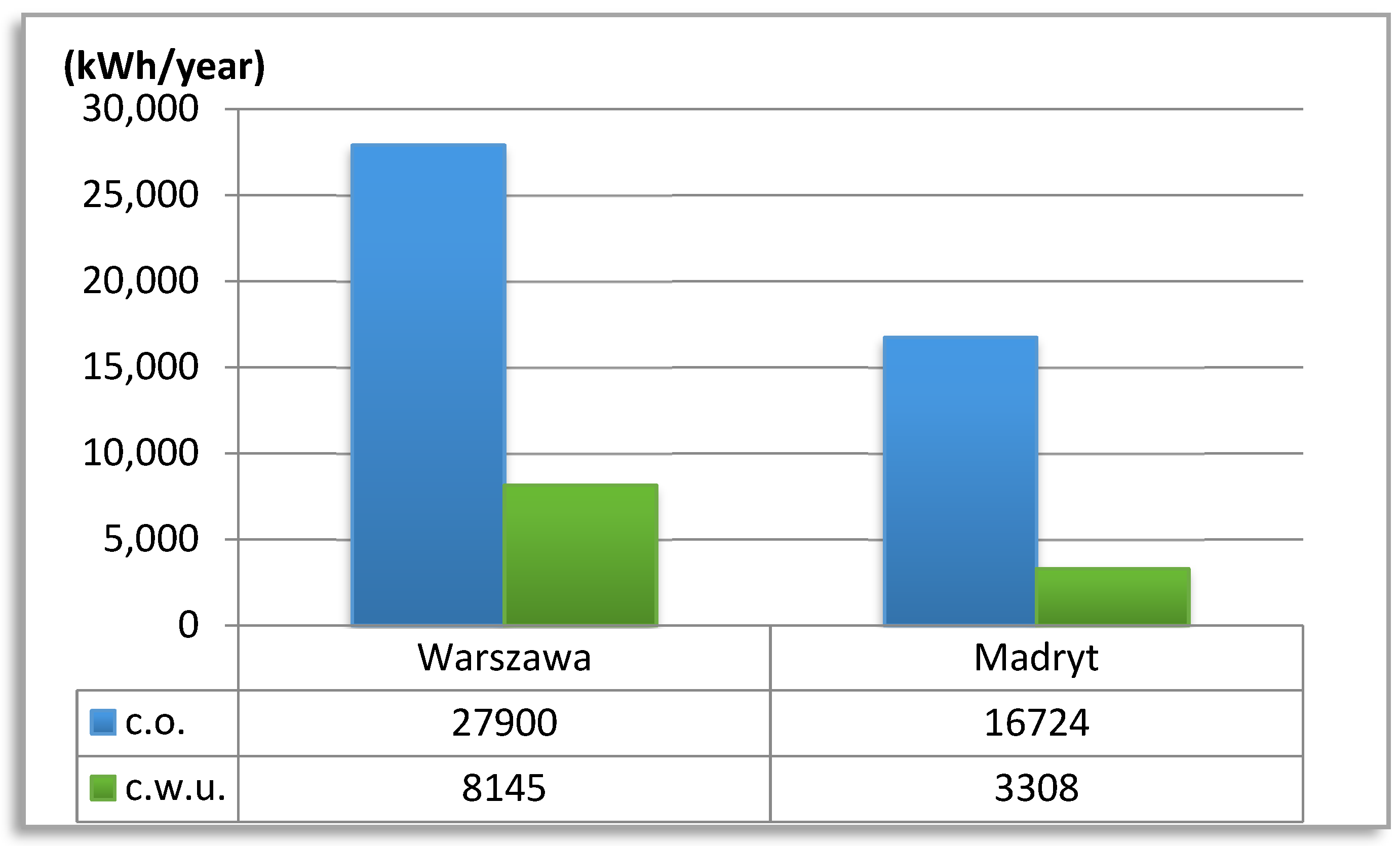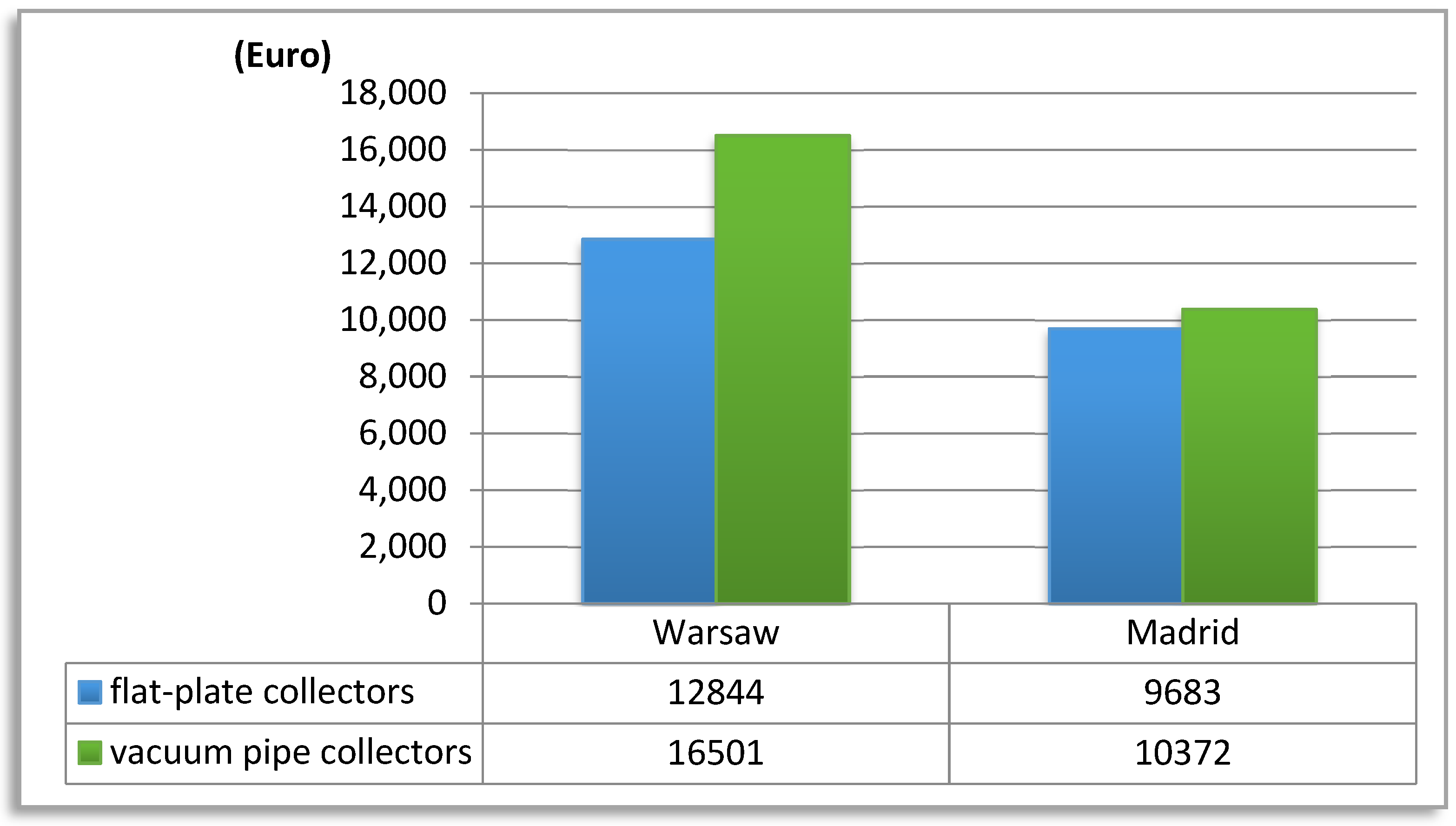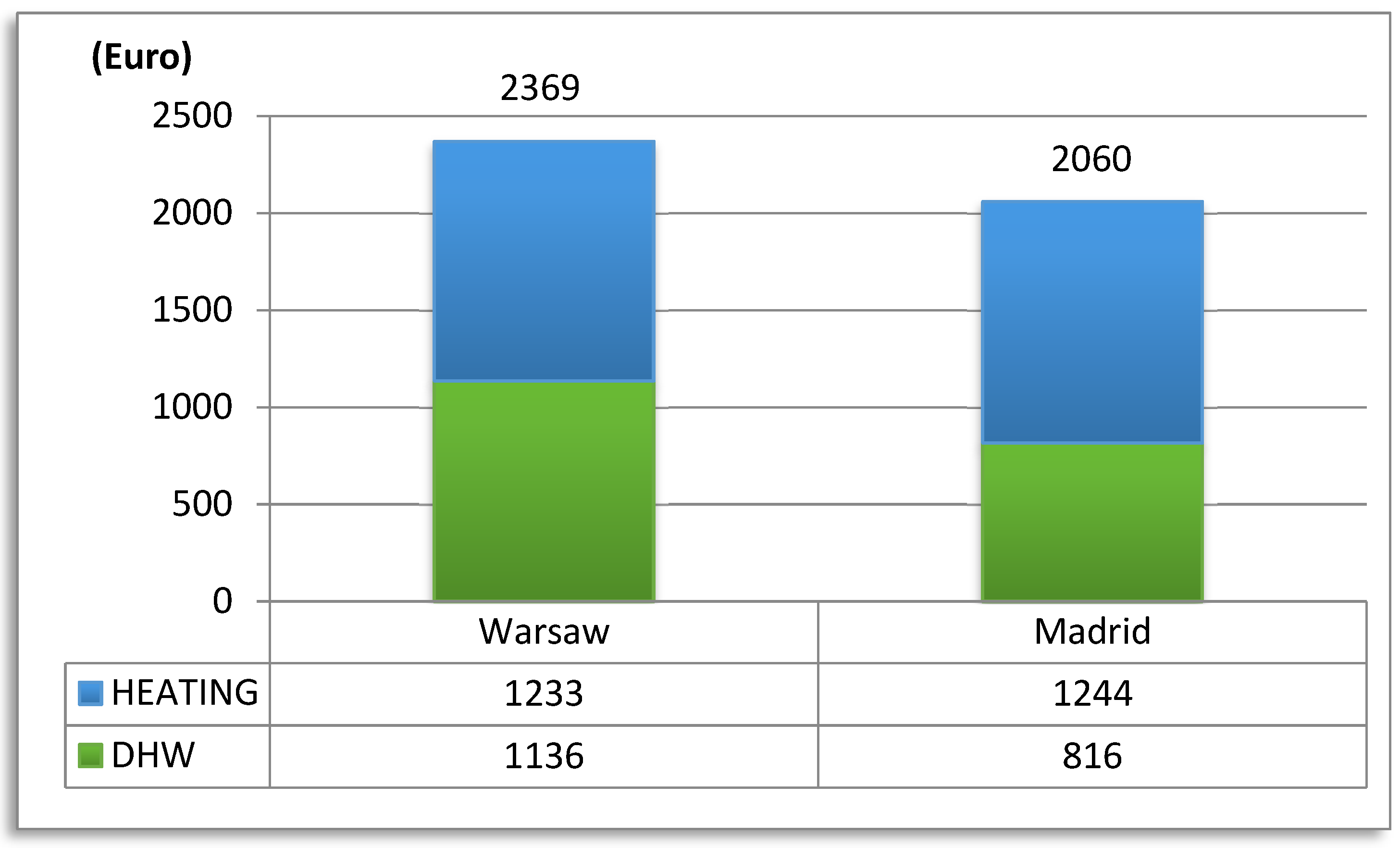1. Introduction
Climate change is one of the biggest environmental, social, and economic threats. Global Climate Report for Annual 2019 [
1] shows that in recent years changes progressed much faster than before. One of the main reasons for such a drastic temperature increase is the use of fossil fuels for energy production. Burning coal, oil, or gas causes greenhouse gas emission to the atmosphere, which significantly increases the average global temperature. Due to this growing problem, the focus in recent years has been on the search for alternatives to traditional fossil fuels. One of the ways to combat global warming is to use renewable energy sources (RES). The role of RES in environmental protection has been previously discussed [
2,
3].
The biggest advantage of RES is their availability. Solar energy is particularly outstanding in this respect, such that we more or less have access to it anywhere on Earth. Low-carbon investments that significantly reduce environmental pollution also lead to improved quality of life. Energy produced from renewable sources also affects the development of many sectors of the economy. It contributes to the growth of innovation and causes the labor market to expand.
In addition to ecological and economic reasons, in the European Union there are also many restrictions that require the use of RES. As at 23 April, 2009 the European Parliament have adopted a directive on the promotion of the use of energy from renewable sources [
4]. This directive was one of the most ambitious and restrictive renewable energy policies in the world. European Union member states have committed to themselves that by 2020 and 2030 at least 20% and 32%, respectively, of total energy needs in European Union will be fulfilled by renewable energy.
2. Methodology
The analysis was conducted for a single-family house. We considered two locations: Madrid in Spain and Warsaw in Poland. Both locations were in the average zone. The analysis was based on a comparison of the total design heat losses, demand for thermal power for domestic hot water, demand for usable energy for heating and hot water, investment costs of installations divided into installations with flat-plate and vacuum pipe collectors, and annual operating costs of installations. Coefficients of heat transfer through building partitions were adopted as the maximum acceptable in Poland, but also meeting the requirements in Spain. The consumption of hot water by the inhabitant during the day was determined in accordance with the guidelines assuming 65 dm
3/M·d [
5] in Poland and 28 dm
3/M·d in Spain [
6]. Solar collectors for the optimal tilt angle were selected using Virtual and Intensive Course Developing Practical Skills of Future Engineers (VIPSKILLS) tools (prepared during Virtual and Intensive Course Developing Practical Skills of Future Engineers Project implemented as a part of the Erasmus+ program, project reference: 2016-1-PL01-KA203-026152).
3. Results and Discussion
The calculations show that the overall design heat losses for a building located in Poland was 11.8 kW and for s building located in Spain it was 7.5 kW. Higher losses in Poland result from the indoor and outdoor temperatures adopted in accordance with the design guidelines.
The demand for thermal power for domestic hot water for a building located in Poland was 7.46 kW, while for a building located in Spain it was 3.02 kW. This is primarily due to the resident’s consumption of hot water in the day. In Poland, the assumed water consumption was more than twice as high as the consumption in Spain.
Regarding the demand for useable energy for heating the building and preparing hot water (
Figure 1), in both cases, higher values occurred in buildings located in Warsaw. With regard to heating, it mainly depended on the overall design heat losses and also the number of heating degree days (HDD), which was 3944 in Warsaw and 2931 in Madrid. In case of demand for usable energy for domestic hot water (DHW) preparation, the difference in demand was primarily due to the amount of water consumed per-year by the inhabitant, as well as the difference between the temperature of the cold water flowing into the installation. In Warsaw the cold water temperature was 10 °C, while in Madrid it was 13 °C.
For the solar collector calculations, the tilt angle adopted was 42° for Warsaw and 34° for Madrid. For heating DHW in Warsaw three flat-plate and four vacuum pipe collectors were selected. For the building located in Madrid one flat-plate and one vacuum pipe collector was selected.
Comparing installations of flat-plate and vacuum pipe collectors, higher investment outlays in both Warsaw and Madrid incur for vacuum pipe collectors (
Figure 2). In this case, a particularly large difference was noticeable for a building located in Poland. This is mainly due to the larger number of collectors adopted, as well as the higher purchase prices for this type of installation.
As shown in
Figure 3, the annual operating costs of installations were higher for a building located in Warsaw. The annual cost of heating a building with a gas boiler does not differ depending on the location, despite the fact that the demand for heating energy for the building in Poland was much higher. This is due to the difference in price for 1 kWh of gas consumption. The gas price in Spain is 70% higher than in Poland. The same applies to the annual operating costs of DHW installations. In Warsaw, they are slightly higher than in Madrid despite the fact that the demand for energy for locations in Poland was about 60% higher. This is also due to the difference in the price for electricity, which is almost twice as high in Spain than in Poland.
4. Conclusions
Based on the results obtained, it can be stated that solar collectors are more economically advantageous in Spain than in Poland. This is primarily due to climatic conditions. Higher temperatures and much more sunshine hours per-year result in solar collectors and solar installations achieving higher efficiency, which means the system generates lower energy consumption and lower costs. It should also be noted that traditional fuel prices in Spain are very high. For this reason, investing in renewable energy sources is becoming the best alternative.
In Poland, investment outlays and annual operating costs are higher than in Spain, but this does not mean that the solar installation in Polish climatic conditions is unprofitable. Appropriate design of the installation and correct operation mean that the one-off costs of purchasing solar collectors pay for themselves as a result of the savings obtained by reducing the use of traditional fuels.








